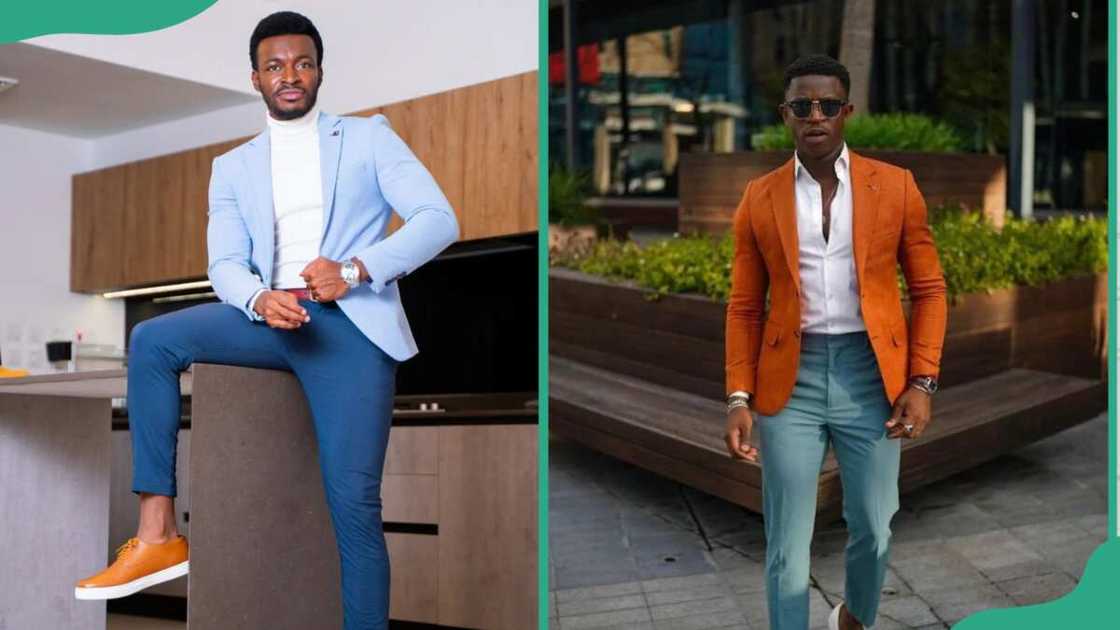When dressing for professional settings that aren’t overly formal, the phrase “business casual for men” often stirs up confusion and curiosity. While business casual is widely embraced in modern workplaces, defining what it means can be challenging. It bridges the gap between traditional business attire and casual wear, blending professionalism and personal style. If you’ve ever struggled to decode this dress code or want to upgrade your wardrobe, this article will break down everything you need to know about business casual for men.
What Does Business Casual for Men Mean?
Business casual for men is a dress code that balances formal and informal attire. It offers flexibility while still maintaining a polished and professional appearance. While the definition can vary slightly depending on the workplace, industry, or geographic region, business casual typically includes tailored trousers, button-down shirts, and loafers, excluding jeans, sneakers, or graphic t-shirts.
At its core, It is about looking neat and intentional without veering into overly formal or relaxed territory. Think of it as a modernized version of professionalism that still allows you your style.
Key Components of Business Casual for Men
Achieving the perfect business casual look doesn’t have to be complicated. Let’s break it down into individual components to make dressing more accessible and consistent.
1. Shirts: Crisp and Clean is Key
The foundation of any business casual outfit starts with the shirt. Here are the top options:
- Button-down shirts are a classic and versatile choice. Stick to solid colours like white, light blue, or pastel tones. Subtle patterns such as pinstripes or small checks are also acceptable.
- Polo shirts are greateat for a relaxed business look, especially in warmer climates. Choose polos in neutral or muted colours, avoiding loud designs.
- Sweaters over shirts: Layering a sweater over a collared shirt can elevate your outfit while keeping it appropriate for cooler seasons. Stick to V-neck or crewneck sweaters in solid or simple patterns.
Avoid shirts with bold logos, slogans, or overly casual materials. Always ensure your shirt is ironed and fits appropriately.
2. Pants: Tailored but Relaxed
Regarding trousers, business casual for men calls for tailored pants that lean toward the formal side but feel comfortable. Here are your go-to options:
- Chinos are the most popular choice for business casual attire. They offer versatility and come in various colours, such as khaki, navy, or grey.
- Dress slacks are ideal for workplaces with stricter business casual rules. Choose slim or straight-cut trousers in neutral shades.
- Dark-coloured cords: A seasonal alternative to chinos or slacks, especially in fall or winter.
Avoid jeans (unless specifically allowed by your office culture) and any pants with excessive embellishments or distressing.
3. Blazers: The Finishing Touch
A blazer isn’t always required for business casual, but it’s a brilliant addition to elevate your look. Stick to blazers in neutral tones like navy, grey, or black for maximum versatility. A well-fitted blazer instantly makes a simple outfit look sharper and more professional.
For more casual workplaces, an unstructured blazer in a soft fabric can strike the right balance between polished and relaxed.
4. Shoes: Stay Polished from the Ground Up
Footwear is one of the most critical aspects of business casual for men, as it can make or break your outfit. Consider these styles:
- Loafers: Timeless and versatile, loafers work perfectly with chinos or slacks.
- Oxford or Derby shoes: Slightly more formal but still appropriate for business attire.
- Chelsea boots are a stylish choice for cooler months. For a professional vibe, stick to leather in black or brown.
Avoid athletic sneakers, flip-flops, or shoes that look overly casual or worn out. Make sure your shoes are clean and polished.
5. Accessories: Minimal Yet Intentional
Accessories can add a touch of personality to your business casual outfit without overdoing it. Key tips include:
- Belts: Match your belt to your shoes for a cohesive look. Leather belts in black or brown are ideal.
- Watches: A classic leather or metal strap watch is an excellent addition to any business casual ensemble.
- Ties: While not always required, a tie can add a more refined appearance to your outfit. Stick to simple designs and muted colours.
Steer clear of overly flashy or casual accessories, such as bright-coloured bracelets or large chains.
How to Adapt Business Casual for Different Seasons
Your business casual wardrobe will naturally change with the seasons. Here’s how to adapt your style year-round:
Spring and Summer
- Opt for lightweight fabrics like cotton or linen to stay calm.
- Choose short-sleeve button-downs or polo shirts for warmer days.
- Light-coloured chinos and loafers work well in bright, sunny weather.
Fall and Winter
- Layer with sweaters, cardigans, or blazers for warmth.
- Incorporate darker shades like burgundy, forest green, or navy for a seasonally appropriate look.
- Swap loafers for leather boots or dress shoes with thicker soles to combat colder conditions.
Common Mistakes to Avoid in Business Casual for Men
Even with clear guidelines, it’s easy to make mistakes when assembling a business casual outfit. Here are some pitfalls to avoid:
- Wearing ill-fitting clothes: Proper fit is crucial. Baggy or overly tight clothing can ruin the look, no matter how expensive the items are.
- Choosing inappropriate footwear: Your shoes should always be clean and professional, as they are often the first thing people notice.
- Being too casual: Items like t-shirts, hoodies, or ripped jeans are typically unacceptable for business casual settings.
- Ignoring grooming: Even the best outfit can fall flat without proper grooming. Make sure your hair, facial hair, and nails are well-maintained.
- Over-accessorizing: Stick to subtle accessories and avoid anything too bold or distracting.
Why Business Casual Matters in the Workplace
Adhering to a business casual dress code goes beyond just following workplace rules. Here’s why it matters:
- Professionalism shows that you respect the workplace environment and take your role seriously.
- Confidence: Dressing well can boost your self-esteem and help you make a positive impression.
- Adaptability: Mastering business casual shows you can adapt to varying levels of formality, a valuable skill in many industries.
Conclusion
Mastering business casual for men doesn’t have to be a daunting task.By understanding the key components—shirts, pants, shoes, and accessories —you can easily create outfits that look polished and professional without feeling stiff or overdressed. Remember to prioritize fit, simplicity, and versatility in your wardrobe and constantly adapt your style based on the season and workplace culture.
In today’s modern office environments, business casual strikes the perfect balance between looking sharp and feeling comfortable. With the right approach, you’ll meet the dress code expectations and stand out as someone who embodies professionalism and style. So, the next time you’re faced with a business casual event or office setting, you’ll know exactly how to dress for success!



